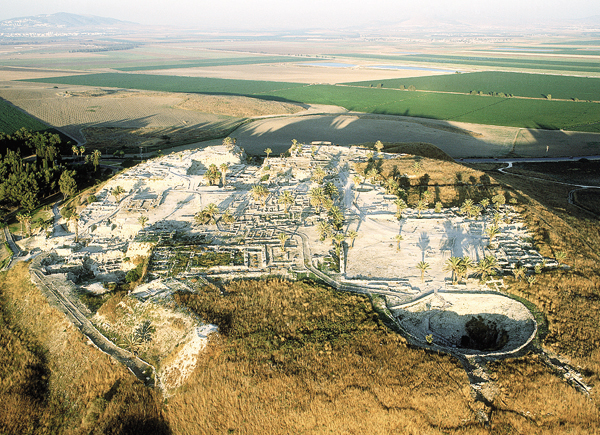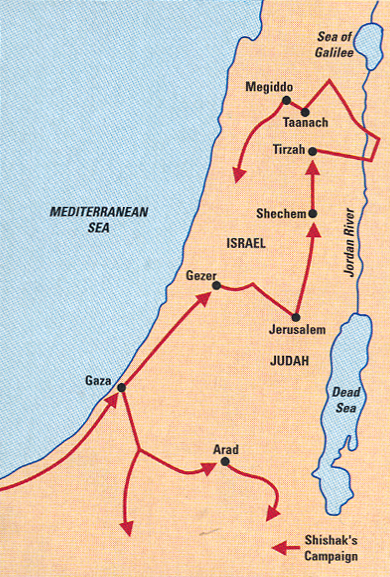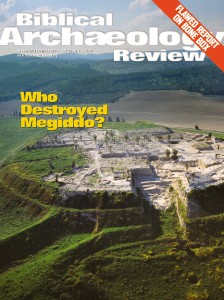Megiddo at A Glance
Sidebar to: The Battleground

Strategically located on the important Via Maris trade route, ancient Megiddo (Tell el-Mutesellim) was designated “Armageddon” in the Book of Revelation, the site of the ultimate battle at the end of days. Megiddo was settled as early as the Pre-Pottery Neolithic period (8300–5500 B.C.E.). The Early Bronze Age I (3300–3000 B.C.E.) saw the creation of a large, unfortified settlement in an area to the east of the mound, which today rises 100 feet above the floor of the Jezreel Valley.

From the 20th century B.C.E. through the 12th century B.C.E., Megiddo flourished as a Canaanite city-state. In about 1479 B.C.E. it was conquered by Pharaoh Thuthmose III. Egyptian domination continued for over 300 years.
Canaanite Megiddo was destroyed by fire; the evidence of this destruction is assigned to Stratum VII (discussed by Timothy Harrison in the accompanying article). Somewhat later—the dating is still hotly disputed—the city represented by Stratum VI, which seems to have been of a mixed Israelite and Philistine character, also fell victim to fire. (A contorted skeleton and smashed pottery from this stratum testify to the violence of its end.)
Already a library member? Log in here.
Institution user? Log in with your IP address.

